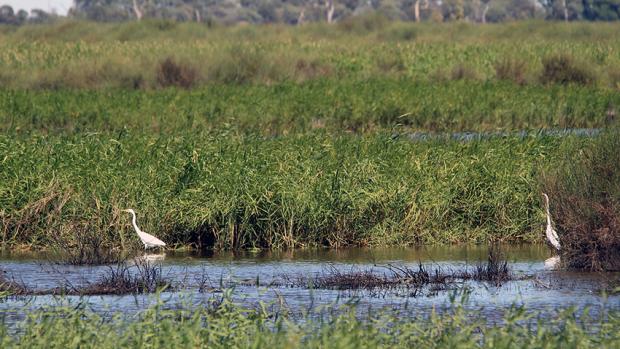Loading
Protection work at important wetlands continues

Water levels at two internationally important north central Victorian wetlands will be lowered next week to reduce the spread of reeds and provide better breeding and feeding conditions for waterbirds.
January’s flash floods resulted in unseasonal flows filling Johnson and Hird swamps, key wetlands in the Ramsar-listed Kerang Lakes complex.
North Central Catchment Management Authority (CMA) Environmental Water Reserve Officer Peter O’Toole said the summer floods created ideal growing conditions for reeds and rushes, which were already encroaching on the open water.
“By lowering the water levels now, the fringes will dry out, helping control the spread of reeds and providing open-water habitat for ducks, as well as the right conditions for wading birds,” he said.
“It will also mean we can protect the work we have been doing with Barapa Barapa First Nations people, planting redgums to replace those that died when the wetlands were irrigation storages.
“It may seem odd to be releasing water from wetlands to protect trees and waterbirds, but at this time of the year, and at these wetlands, it’s the right management decision.”
Before European occupation, Hird and Johnson swamps filled and drew down almost yearly, creating the perfect environment for multiple species of waterbirds, including waders that thrive on mudflats.
“Managing wetlands and rivers is more than just adding water,” Mr O’Toole said.
“Complementary measures such as revegetation and wetting and drying cycles can be just as important.
“We’re working with community groups and organisations such as Parks Victoria and the Department of Energy, Environment and Climate Action’s Arthur Rylah Institute to manage vegetation and create the right conditions for waterbirds at these wetlands.”
North Central CMA and Goulburn Murray Water will release water from both wetlands into Pyramid Creek. Hird Swamp will drop about 20 to 30 centimetres and Johnson Swamp about 50cm.
Water will be released to correspond with current high irrigation demand, to allow creek and wetland water to mix and help mitigate any potential water quality issues.
This project is part of the Victorian Government’s $248 million investment over four years (2020-2024) to improve catchment and waterway health across regional Victoria.
